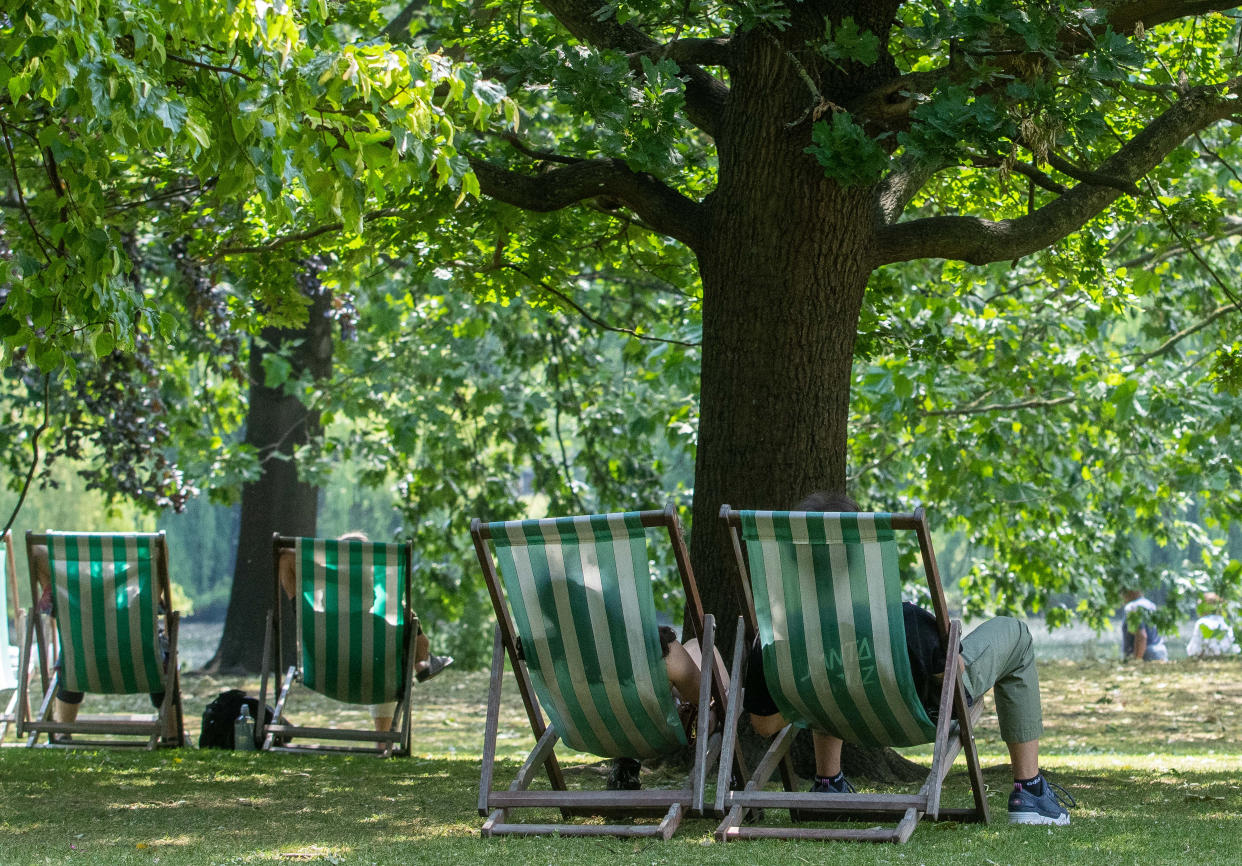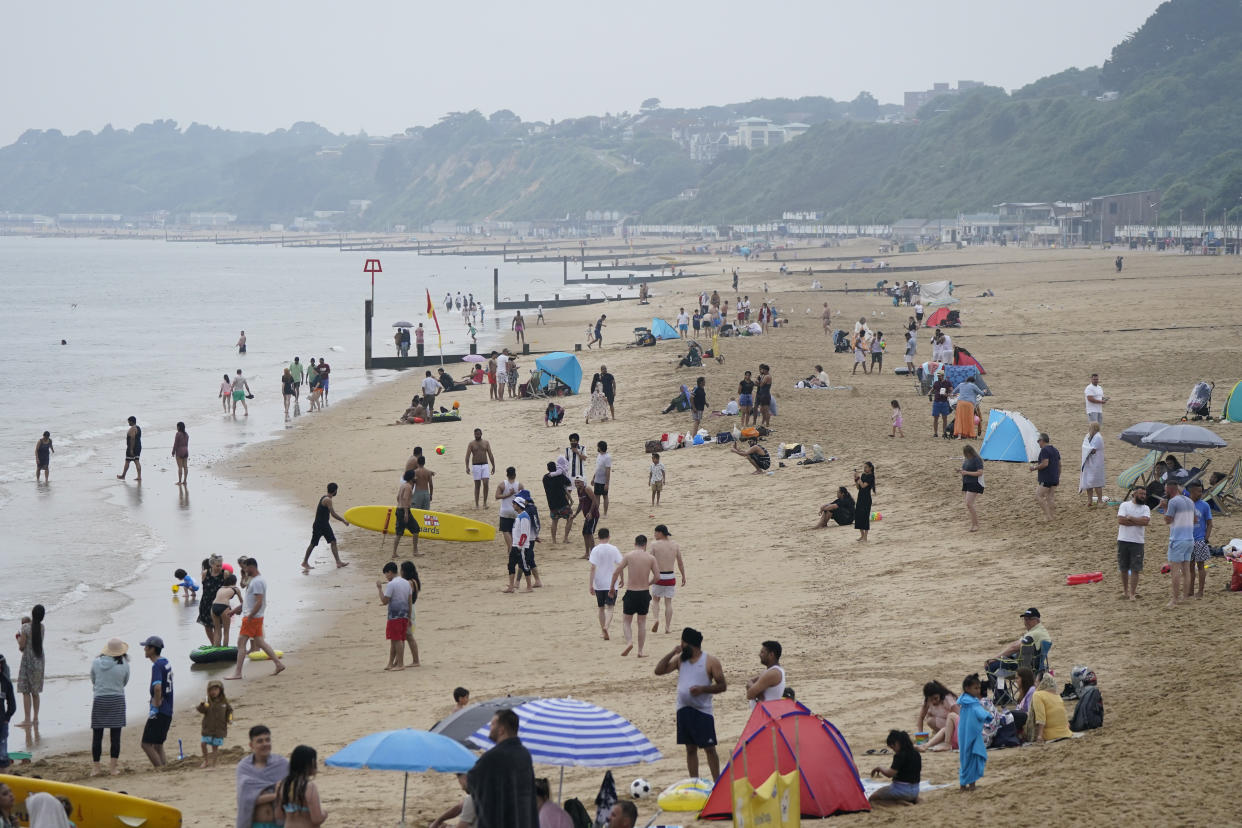How to stay safe during thunder and lightning as Met Office issues weather warnings
Thunderstorms and heavy rain are set to hit large parts of the UK on Monday after a weekend of soaring temperatures.
Saturday was the hottest day of the year so far, with 32.2C recorded in Chertsey, Surrey, as most of the country basked in warm weather, although some areas experienced heavy rainfall.
But the Met Office has issued four yellow warnings for thunderstorms from midday until 9pm on Monday that cover parts of Scotland, Northern Ireland, much of southern England and the Midlands and most of Wales.
It warned of sudden flooding in those areas and potential transport difficulties.
A yellow warning for rain has also been issued covering southern parts of England and Wales until 9am on Monday.
What are the dangers of thunder and lightning?
According to advice from the Met Office, thunderstorms in the UK in summer are most likely to produce large, gusty winds and torrential downpours.
It said the dangers that come with this are hazardous driving conditions, decreased visibility, standing water and lightning.
The Met Office said there are several myths around lighting - such as lightning never strikes the same place twice or it always strikes the tallest object - both are incorrect.
Lightning strikes the best conductor on the ground whether it has been struck before or not.
How can you stay safe during a thunderstorm?
The Met Office says you should seek shelter if possible before a thunderstorm.
"When you hear thunder you are already within range of where the next ground flash may occur, lightning can strike as far as 10 miles away from the centre of a storm," it said.
Because telephone lines can conduct electricity, you should avoid using the landline during a thunderstorm, except in an emergency.

If you are caught outside in a thunderstorm, avoid water and find a low-lying open place that is a safe distance away from trees, poles or metal objects.
If you are in an exposed location, you should squat close to the ground with your hands on your knees and your head tucked between them, so you are touching as little of the ground with your body as possible. Do not lie on the ground, the Met Office says.
What should you avoid during thunder and lightning?
Activities such as golf, rod fishing or boating on a lake should be avoided.
People should also be wary of metal objects that can conduct or attract lightning, such as golf clubs, golf buggies, fishing rods, umbrellas, motorbikes, bicycles, wheelchairs, mobility scooters, pushchairs, wire fencing and rails.
If in a tent during a thunderstorm, try to stay away from the metal poles.
What should drivers do in a thunderstorm?
If caught driving in thunder and lightning, you should wind up the windows and stay inside your car. In most vehicles, the frame will act as a conductive Faraday cage, passing current around the passengers inside and on to the ground.
The Met Office said: "Thunderstorms can also bring a risk of sudden gusty winds, those most at risk would include cyclists, motorcyclists and high sided vehicles."

Drivers should give cyclists, motorcyclists and pedestrians more room than usual during a thunderstorm, while also lowering their speed and keeping a safe distance between them and the car in front.
If hail is severe enough to affect visibility, motorists should pull over to a safe place and remain in their vehicle.
What has the Met Office said?
Met Office meteorologist Dan Stroud said: “On Monday, we’re expecting a fine and hot start, temperatures rising fairly quickly during the course of the morning under strong early summer sunshine and that’s likely to spark a few thundery showers.
“Parts of Wales and England will see 30mm of rain in an hour, 60 to 80mm in some spots.
“North parts of Northern Ireland, south-west Scotland and the Highlands could see 20 to 30mm of rain in an hour during the thunderstorms, and 40 to 50mm in some spots.
“Potentially we are looking at a month’s worth of rain falling.
“The highest temperatures will be around Birmingham and in Wales.
“It will widely be 24C to 28C on Monday, with some spots sitting at the 30C to 32C mark."
Watch: Public enjoy hot weather in London


